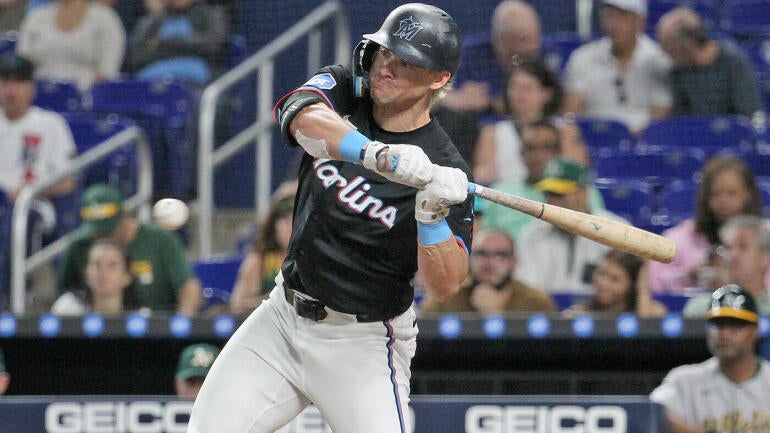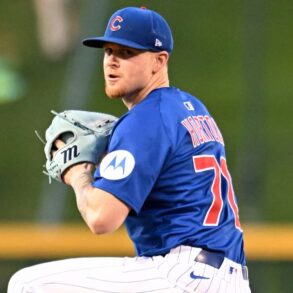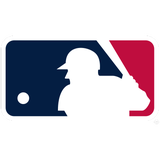
Major League Baseball’s regular season is more than a month old, making this the opportune time to check in on some players who are rising eyebrows across the league.
Earlier this week, I highlighted five pitchers whose early season performance had deviated from expectations: three in a positive manner, two in a negative manner. Today, let’s perform the same exercise for five hitters: three who appear to be on the rise, and two who find themselves under the tide — and what it all means for the rest of their seasons.
Got it? Good. Let’s get to business.
Hitters on the rise
1. Maikel Garcia, 3B, Kansas City Royals
I had Garcia down as a breakout pick entering last season. He then put forth a career-worst showing, making it difficult for me to justify choosing him again this spring. I should have. Garcia is hitting .316/.386/.493 (148 OPS+) with four home runs (his single-season career-high is seven) to date. He’s doing so while continuing to show off a premium glove at the hot corner. That’ll play.
Garcia has always produced better ball-tracking data than his statline indicated. The problem is that he too often smoked the ball into the ground, suppressing his offensive potential. He’s seemingly made some improvements in that regard so far this season, upping both his average launch angle (to a career-high mark) and his percentage of pulled fly balls. Factor in how Garcia is making contact on more than 90% of his in-zone swings, and you have a compelling profile.
Given that I’ve been sweeter on Garcia than I should have been in the past, I’m more inclined to buy into the idea that he’s made genuine improvements. At absolute minimum, he stands a good chance of compiling more Wins Above Replacement this year than in the last two combined (2.3).
2. Kyle Stowers, OF, Miami Marlins
The Marlins obtained Stowers as part of last summer’s swap with the Orioles that sent out lefty Trevor Rogers and also returned infielder Connor Norby. Whereas Norby had instant success with Miami, Stowers hit just .186/.262/.295 after the trade with 61 strikeouts in 50 games. Those two have experienced a role reversal to date in 2025. Norby has scuffled (in a small sample), while Stowers entered Saturday batting .295/.371/.492 (135 OPS+) with six home runs.
Stowers isn’t just crushing the ball, he’s barreling it at high rates. To wit, more than 49% of his balls in play have cleared 95 mph, and more than 42% of them have been launched within the “sweet spot” window (10 to 30 degrees). For reference, here’s a complete list of players over 40% in both categories:
- Kyle Stowers
Stowers has made aesthetic changes to his stance from last year, opening up and lowering his hands to streamline his load. You might wonder if that’s helped him with his extreme swing-and-miss tendencies. Not even a little. He’s only (only) striking out around 30% of the time, but he has the third-highest whiff rate among qualified batters (37%). That mark includes a 31% whiff rate on in-zone pitches, the second worst rate in all the majors.
All of that to say: Stowers has an extreme boom-or-bust profile, the likes of which will probably generate its share of hot streaks and cold spells. If he stays on this heater a little longer, he’ll likely be rewarded with a trip to the All-Star Game.
3. Zach McKinstry, UTL, Detroit Tigers
Just when you thought it was safe to regard McKinstry as your classic super-utility player — that is, someone capable of standing wherever on the diamond, but incapable of hitting enough to merit a starting job — he goes and finds himself leading a first-place club in on-base percentage. That he’s doing so while playing all over the place (albeit mostly in right field) and racking up baserunning advancements has made him one of the most productive Tigers to this point.
The main difference for McKinstry this year versus last has to do with his batted-ball spray. Namely, he’s hitting the ball on a line more frequently. Whereas around 38% of his batted balls last season were launched between 10 and 30 degrees, that rate is now up to 47%, according to Statcast. McKinstry has noticeably done a better job of staying through elevated pitches, as opposed to hitting them hopelessly in the air like he did in the past.
Will those gains stick? It’s only natural to be skeptical, given we’re talking about a 30-year-old with just-OK contact and on-base skills and without the explosiveness to slug. McKinstry certainly isn’t going to record a .400 batting average on balls in play for the season; once that number starts to regress toward his normal .280 range, I think he’ll be back in a reserve role.
Hitters under the tide
4. Ryan Mountcastle, 1B, Baltimore Orioles
Want a quick lesson on incentives? Here’s Mountcastle, a right-handed batter’s percentage of pulled balls in the air over the last five seasons:
- 2021: 20.5%
- 2022: 15.4%
- 2023: 12.4%
- 2024: 10.1%
- 2025: 22.2%
Now, here’s a totally unrelated timeline of the Orioles’ alterations to left field at Camden Yards:
It’s fair to assume that Mountcastle has changed his approach to maximize his output at his home field. What’s interesting is that the rest of his game remains largely unchanged. He’s just not getting the same kind of results — at least not yet. Mountcastle entered Saturday batting .208/.242/.317 with two home runs in 36 games. I’ve long had reservations about his game — he has a shallow skill set — but I think he’s going to be fine over the long haul.
5. Marcus Semien, 2B, Texas Rangers
It used to be accepted wisdom that second basemen didn’t often age well into their mid-30s. There’ve been some exceptions over recent years that have challenged that perception. Semien’s age-34 season to date, however, has brought that old rule of thumb back to mind. Through his first 38 games, he’s hitting .175/.253/.226 (41 OPS+) with just two home runs and one stolen base.
It’s not just an unimpressive topline that has me wondering about Semien’s future. There are some worrisome underlying aspects to his struggles. His strikeout rate is at its highest since 2020, and he’s pulling fewer balls in the air than at any point since 2019. Semien is also whiffing and fishing more frequently and generating worse results on pitches thrown at least 94 mph — his .581 OPS is more than 20 points lower than the mark he posted in 2024.
I’m not ready to write off Semien completely, but I will admit that I’m concerned. The Rangers should be, too, especially considering that he’s under contract for three more seasons after this one.
This post was originally published on this site be sure to check out more of their content.




